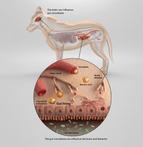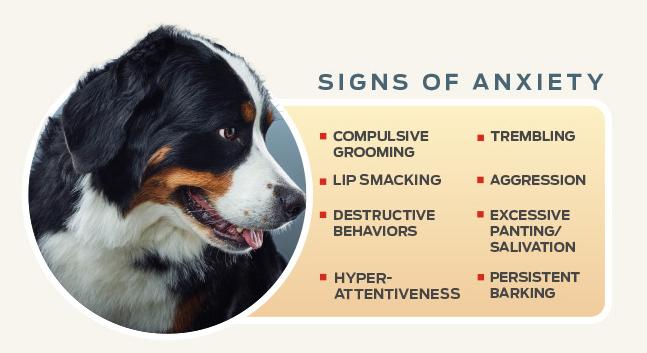
BIFIDOBACTERIUM

The term ‘gut-brain axis’ refers to the constant bidirectional communication between the gastrointestinal tract and the brain.
The idea that the gut influences the brain, and therefore also behavior, is widely understood and accepted. The concept has made its way into everyday language with terms such as ‘gut feeling’, ‘gutsy’ and ‘butterflies in the stomach.’ Despite this, scientists have only recently begun to unravel the mechanisms behind the gut-brain axis. This communication link is at the core of an emerging area of research – neurogastroenterology.
Mounting evidence suggests that gut microbes help shape normal neural development, brain biochemistry and behavior.1 In particular, the gut microbiota are emerging as a key node in the communication between gut and brain. This has led to the coining of a new term: microbiota-gut-brain axis.
The microbiota use several different channels to communicate with the brain and central nervous system (CNS), including:
- The enteric nervous system (ENS): Sometimes called the ‘second brain,’ hundreds of millions of neurons that extend along the length of the digestive tract comprise the ENS. This system communicates subtle changes within the gastrointestinal tract to the brain via the vagus nerve. Primary pathways through the vagus nerve mediate communications between the gut microbes and the CNS.
- The sympathetic nervous system: The release of adrenaline and noradrenaline from the brain and adrenal glands leads to the behavioral responses of fight, flight, or freeze, and can also alter gut motility.
- The hypothalamic-pituitary-adrenal axis: This system mediates the secretion of cortisol, which influences the immediate stress response. Research has shown that gut microbiota may affect the development of these neural systems that govern the endocrine response to stress.
- Immune signaling: Another way that the gut microbiota seem to alter messages to the brain. Evidence shows that the gut microbiota can affect immune cells located in the gut mucosa that modify the activity of sensory neurons of the ENS. These immune cells release cytokines that are important in host responses to inflammation and infection.
- Gut bacterial metabolites: Through the fermentation and metabolism of indigestible fibers (e.g. prebiotics), the gut microbiota produce short chain fatty acids (SCFAs) including acetate, butyrate, lactate and propionate. SCFAs have been singled out as particularly important metabolites with possible influences on brain function. Additionally, the gastrointestinal tract and its bacteria contribute to the body’s production of hormones and neurotransmitters, including dopamine and serotonin.
The microbiota-gut-brain axis

GUT CILIA AND BACTERIA
Research has shown many links between gut bacteria and conditions such as obesity, Alzheimer’s disease and pet anxiety.2-4 The latter is important because up to 70% of behavioral disorders in dogs can be attributed to some form of anxiety.5
The role of the veterinary general practitioner in identifying and treating their patients’ behavior problems – such as anxiety – is a crucial one.6

Pet owners may not recognize all signs of fear and anxiety, or may only reach out once the problem has escalated to the point of crisis.7
CONSEQUENCES OF ANXIETY

Up to 70% of behavioral disorders in dogs can be attributed to some form of anxiety,5 and behavioral disorders are key reasons given for relinquishing pets to shelters.8

Anxiety can result in physiological and behavioral effects, such as increased susceptibility to illness,9 higher heart rates, gastrointestinal disturbances, pacing or circling, or changes in appetite.10

Stress can also affect the pet’s mental and social well-being, leading to the development of chronic frustration and social phobias.11

Purina's research

In a blinded, crossover study, Purina scientists discovered that dogs supplemented with Bifidobacterium longum showed significant reductions in displaying anxious behaviors, when compared with dogs fed a placebo. A majority of the dogs studied also showed lower heart rates and salivary cortisol levels.
From both a behavioral and physiological standpoint, B. longum had anxiety-reducing effects on anxious dogs.
Purina Institute’s Meet the Scientist Video Series
Key things to remember
- The gut microbiota are essential to the constant bidirectional communication between the gut and brain via the nervous system, immune system, neuroendocrine pathways and metabolites.
- Accruing evidence suggests that gut microbiota help shape normal neural development, brain biochemistry and behavior.
- Nutritional interventions that can influence the gut microbiota composition have the potential to alter behavior and mood.
- Anxiety plays a part in many behavioral disorders of dogs and can negatively affect the physical and mental health of the pet, and the bond between owners and their pets.
- Purina's scientists have shown that a strain of B. longum has been shown to help maintain calm behavior in dogs.
Find out more
1. Shen, H. H. (2015). Microbes on the Mind. Proceedings of the National Academy of Sciences, 112(30), 9143–9145. doi: 10.1073/pnas.1509590112
2. Dinan, T. G., & Cryan, J. F. (2017). Gut–brain axis in 2016: Gut-brain axis in 2016: Brain-gut-microbiota axis - mood, metabolism and behaviour. Nature Reviews Gastroenterology & Hepatology, 14(2), 69–70. doi: 10.1038/nrgastro.2016.200
3. Köhler, C. A., Maes, M., Slyepchenko, A., Berk, M., Solmi, M., Lanctot, K. L., & Carvalho, A. F. (2016). The gut-brain axis, including the microbiome, leaky gut and bacterial translocation: Mechanisms and pathophysiological role in Alzheimer's disease. Current Pharmaceutical Design, 22(40), 1–15. doi: 10.2174/1381612822666160907093807
4. McGowan, R. T. S., Barnett, H. R., Czarnecki-Maulden, G. L., Si, X., Perez-Camargo, G., & Martin, F. (2018, July). Tapping into those ‘gut feelings’: Impact of BL999 (Bifidobacterium longum) on anxiety in dogs. Veterinary Behavior Symposium Proceedings, Denver, CO, pp. 8–9.
5. Beata, C., Beaumont-Graff, E., Diaz, C. Marion, M., Massal, N., Marlois, N., Muller, G., & Lefranc, C. (2007). Effects of alpha-casozepine (Zylkene) versus selegiline hydrochloride (Selgian, Anipryl) on anxiety disorders in dogs. Journal of Veterinary Behavior, 2, 175–183.
6. Stelow, E. (2018). Diagnosing behavior problems: A guide for practitioners. Veterinary Clinics of North America, 48(3), 339–350. doi:10.1016/j.cvsm.2017.12.003
7. Ballantyne, K. C. (2018). Separation, confinement, or noises: what is scaring that dog? Veterinary Clinics of North America: Small Animal Practice, 48(3), 367–386. doi:10.1016/j.cvsm.20112.005
8. Salman, M. D., Hutchison, J., Ruch-Gallie, R., Kogan, L., New, J. C., Kass, P. H., & Scarlett, J. M. (2000). Behavioral reasons for relinquishment of shelter dogs and cats to 12 shelters. Journal of Applied Animal Welfare Science, 3(2), 93–106.
9. Tanaka, A., Wagner, D. C., Kass, P. H., & Hurley, K. F.. (2012). Associations among weight loss, stress, and upper respiratory tract infection in shelter cats. Journal of the American Veterinary Medical Association, 240(5), 570–576. doi: 10.2460/javma.240.5.570
10. Landsberg, G., Hunthausen, W., & Ackerman, L. (2013). Behavior Problems of the Dog & Cat. Great Britain: Saunders Elsevier. pp. 181–182.
11. Mills, D., Karagiannis, C., & Zulch, H. (2014). Stress – Its effects on health and behavior: A guide for practitioners. Veterinary Clinics of North America: Small Animal Practice, 44, 525–541.
12. Mariti, C., Gazzano, A., Moore, J. L., Baragli, P., Chelli, L., & Sighieri, C. (2012). Perception of dogs’ stress by their owners. Journal of Veterinary Behavior, 7(4), 213–219.
13. Seibert, L. M., & Landsberg, G. M. (2008). Diagnosis and management of patients presenting with behavior problems. Veterinary Clinics of North America: Small Animal Practice, 38, 937–950.
14. Patronek, G. J., & Dodman, N. H. (1999). Attitudes, procedures, and delivery of behavior services by veterinarians in small animal practice. Journal of the American Veterinary Medical Association, 215(11), 1606–1611.

